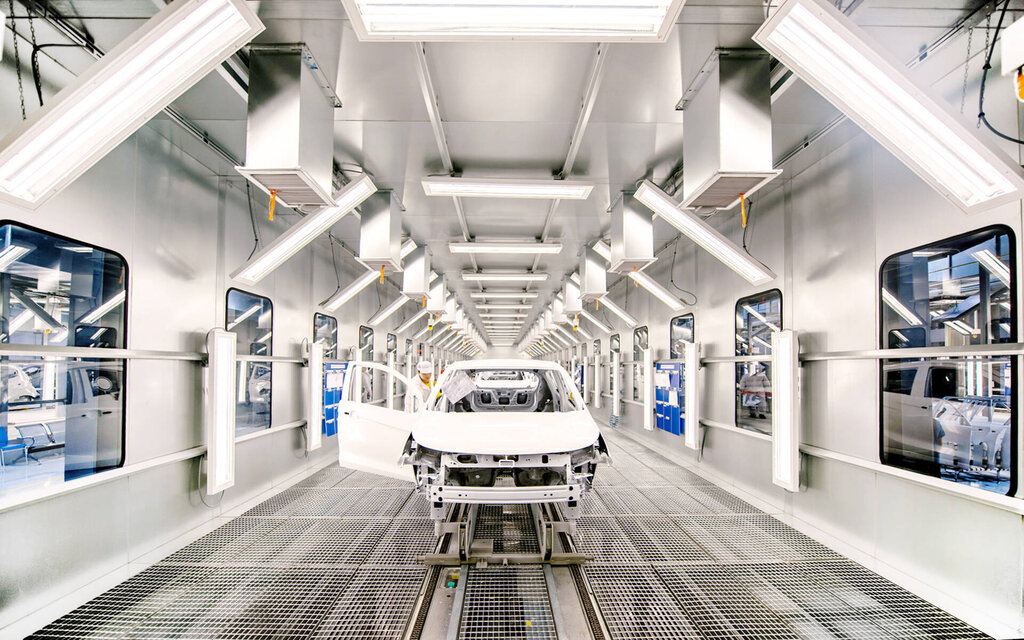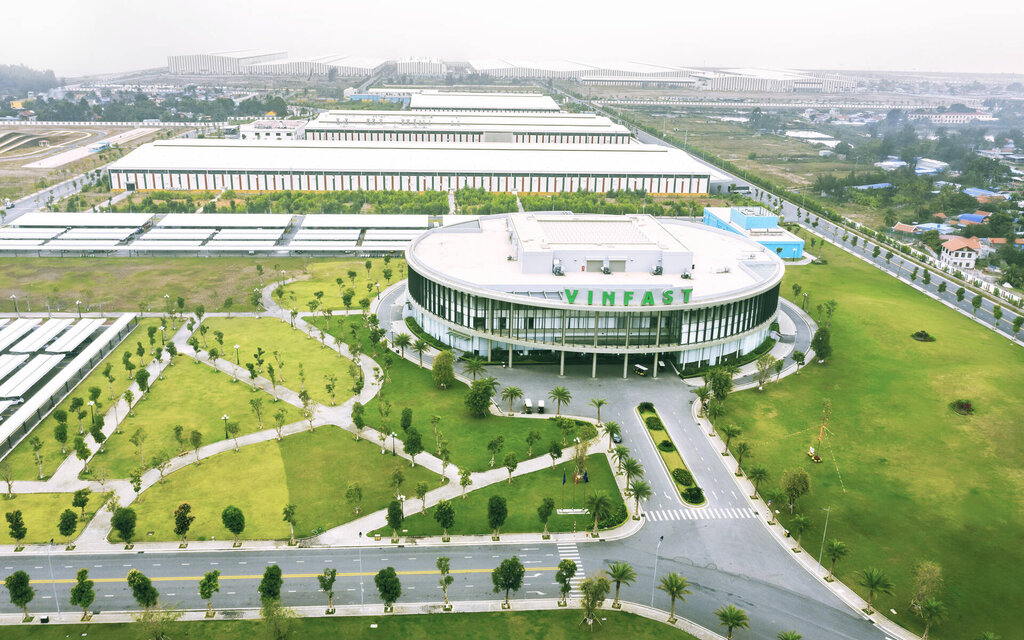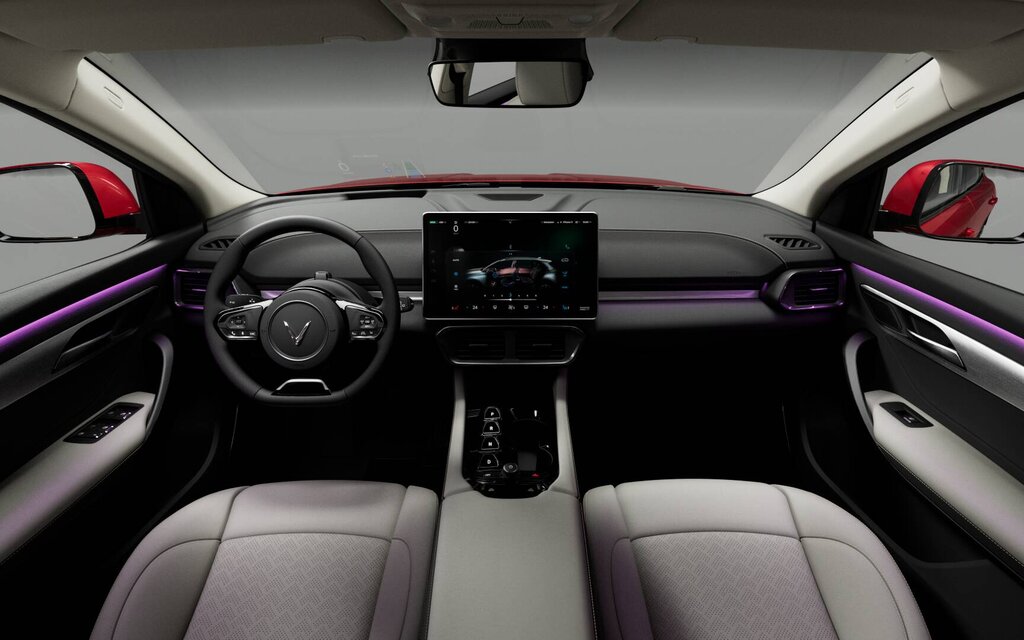The size of the resort is impressive: 832 hectares, or 8.32 square kilometers. By way of comparison, it is an area four times greater than that of Mount Royal Park in Montreal.
Just two years ago, half of this space was swampland bordering the South China Sea. Today, it is the VinFast facilities that can be found in this region of Hai Phong in Vietnam. That this company, founded barely five years ago, managed to erect such a complex in record time and to build electric vehicles and scooters there in just 21 months is a miracle.
According to Thi Thu Thuy – a 47-year-old female triathlete, who is at the head of the manufacturer and also vice-president of the conglomerate Vingroup which oversees the new car brand – VinFast makes decisions and accomplishes things quickly, even if it means modifying its approach in along the way in order to refine it.
Photo: Vinfast
Why is this being discussed today? Quite simply because VinFast has decided to tackle the most difficult and demanding automotive market in the world this fall, that of North America, after having launched a first assault in Vietnam, France, the Netherlands and in Germany. After beginnings when it produced General Motors and BMW vehicles under license for the Asian market, VinFast took the decision to design and build its own vehicles, first with internal combustion engines, then with electric engines. It is therefore with two electric SUVs, the two-row VF 8 and the three-row VF 9 launched at the Los Angeles Auto Show in November 2021, that VinFast is launching an assault on the North America.
State-of-the-art facilities
Vietnam’s economy is booming, growing faster than other Southeast Asian countries, and VinFast seems to have the means to match its ambitions. During the visit to its facilities in Hai Phong, we see that the firm has acquired the best tools from recognized equipment manufacturers such as Schuler, Bosch, Siemens, Dassault Systèmes, SAP, ABB, Thysenkrupp, and so on.
In short, we find in the various buildings of VinFast the same equipment as those of established car brands, and the manufacturer has also recruited professionals, such as Shaun Calvert who previously managed General Motors factories in Australia. For now, VinFast assembles its battery packs with cells from recognized brands, such as Samsung, but the manufacturer will produce its own cells in just a few months.

Photo: Vinfast
VinFast is one of the companies in a conglomerate called Vingroup, founded and headed by Pham Nhat Vuong in 1993, who quickly became Vietnam’s richest man. This conglomerate, almost sprawling, is active in all spheres of the country’s economy, and has a capitalization of 39 billion dollars. Vingroup owns businesses in automotive manufacturing (VinFast), home building (VinHomes), resort hotels (VinPearl), medical services (VinMedic), education services (VinUnivesity), and banking services with the VinPay app, among others. In short, Vingroup is literally embedded in the country’s economy, and is a major player in Vietnam’s economic growth.

Photo: Vinfast
First contact with Vinfast VF 8
The first contact with the VF 8 electric SUV took place in special circumstances, i.e. driving a prototype on a road closed to traffic for a journey totaling 24 kilometers, because I asked to do it twice .
It was far too little to get a good idea, but it did allow us to make certain observations. At first, the assembly quality really left something to be desired with notable discrepancies in the fit of the body panels as well as the interior finish.
Second, although the combined output of the two electric motors in our prototype was rated at over 400 horsepower, I never felt like the VF 8 delivered that power. In terms of handling, the direction was rather vague, and the ground connections made up badly with the mass transfers.

Photo: Vinfast
Impossible, in these very limited conditions, to validate the autonomy, the effectiveness of regenerative braking or the management of energy flows, among others. In short, many questions still remain unanswered, and it is clear that there are still a lot of adjustments to be made before the VF 8 and VF 9 can be launched on the North American market. We hope that work will continue at VinFast and that the series models will be more developed, but the challenge of marketing the VF8 and VF9 in North America this fall seems very ambitious to me.
In short, VinFast has given itself the technical means to produce quality motor vehicles. However, the company is still very young and needs to master manufacturing techniques before it can tackle the demanding automotive market of North America, with more advanced products than the prototype tested recently. VinFast has experienced rapid growth and its future is promising, but we must not skip the steps and this is the major challenge for this new manufacturer, in my humble opinion.
